Irish farms are busy places in the spring. With work coming from every angle, nothing can add more pressure than a calf scour outbreak. Some outbreaks can be devastating, with calves dying despite huge efforts to save them. Focusing on prevention can make a big difference to efficiency.
Calf diarrhoea
Calf scour occurs when pathogens invade the gut of the young animal, overcoming the immune system and damaging the gut, causing diarrhoea.
This leads to huge fluid loss, weakness, other infections and cold.
Appetite is often reduced and calves may get sick quickly.
When calves become recumbent or down it often means veterinary attention is needed.
The young gut and young calf are finely balanced in the first weeks of life.
The bugs that cause diarrhoea damage the lining of the gut, stopping absorption, or else some agents stop absorption, drawing out fluid.
The fluid loss is the starting point for most of the other side effects. So reversing fluid loss early is critical.
What are the bugs
Scours can be caused by a multitude of viruses, bacteria and parasites.
In calves less than five days of age we most commonly find E coli infections causing watery scours. Where colostrum management is poor, we can see high levels of mortality.
The two main viruses are rotavirus and coronavirus.
Antibiotics are needed to treat infections that affect calves because of scour
These affect calves from five days to six weeks. Where we see them in calves four weeks or over there often is another stressor weakening the immune system. Viruses account for up to 40% of scours we see, with parasites such as cryptosporidium and coccidiosis affecting another 40% of cases.
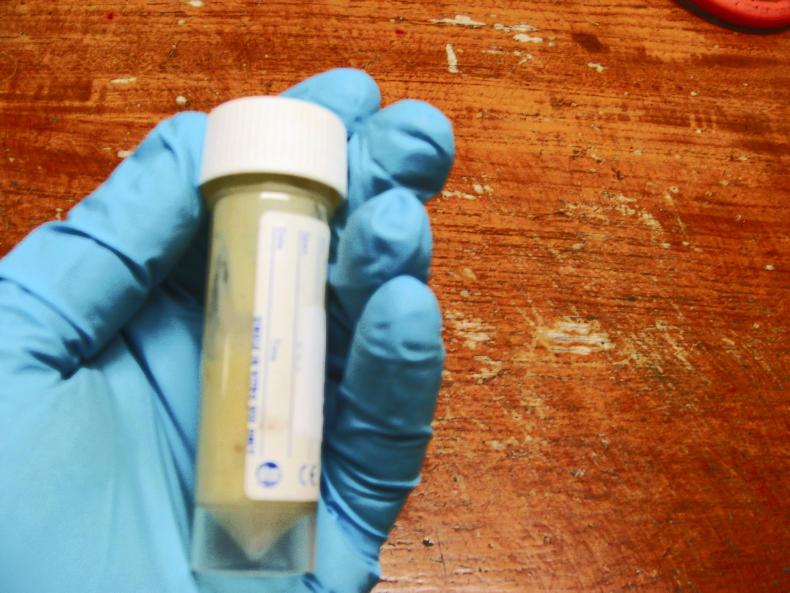
So, most scours are not bacterial, and this is why oral antibiotic treatments are rarely effective.
Antibiotics are needed to treat infections that affect calves because of scour.
I always found anti-inflammatories good in cases of scour at the start.
Salmonella tends to occur in rapidly expanding herds. The bug often causes a bloody mucoid scour, with clots of gut tissue in it.
Salmonella can cause sepsis, neck problems and terminal gangrene. Other agents we sometimes see are clostridium perfringens (bacteria) and giardia, a parasite causing scour in calves from two to six weeks of age.
How important is a diagnosis
It is good to know what pathogens are causing the problem. This can be established by sampling scour from infected calves.
There are rapid tests that can identify the common agents or, if more detail is needed, you can send samples to the lab to be tested for salmonella, giardia or coccidiosis.
This diagnosis can help with individual treatments and prevention and control measures.
Where viruses and bacteria such as E coli have been found, farmers can consider vaccination to boost the antibodies (disease-specific proteins in colostrum) in dry cows.
They won’t cure scour problems, but will help maximise the immunity of young calves.
Treatments
We need to really focus on the biggest symptom – fluid loss. Rehydration is key.
Also, calves with scour can be shedding millions of pathogens, so removing them early as a source of infection is critical.
Calves with scour get cold fast, so we must keep them warm
Having somewhere like a hospital pen really helps where we have a heat source. This must be easy to clean out and away from other young calves.
Where we have batches of calves scouring, isolating individuals is more difficult and often just leads to spreading infections. Calves with scour get cold fast, so we must keep them warm.
Calves lose 6-8 litres of fluids daily when they are scouring so we have to replace this as fast as possible.
We also must keep calves on their mothers or on milk. This provides vital energy and nutrition to the calf and the damaged gut.
I have tried lots of probiotic oral solutions and can’t say any made huge differences.
I always give scouring calves vitB12 injections and really pushed the correct electrolyte solutions.
Electrolytes
Calves that scour don’t just lose water, they lose vital electrolytes as well. This is why rehydration therapy employs quite a bit of science.
The sachets we use can speed up the amount of fluid absorbed (sodium is critical here), provide some energy with glucose and also help reverse acidosis with things such as bicarbonate precursors.
We can make our own electrolyte solutions with half tablespoon of low salt, a tablespoon of bread soda and three tablespoons of glucose powder added to 2 litres of clean water.
Stomach tube any calves not drinking this feed. Aim for 2 litres of fluids twice daily between milk feeds
My own experience is that while this might save money, it is better if proper electrolytes are used.
Some of the better electrolytes contain bicarbonate precursors and are better balanced for absorption.
Where groups of calves are scouring, at least one midday feed of warm electrolytes to the group works well.
Stomach tube any calves not drinking this feed. Aim for 2 litres of fluids twice daily between milk feeds (4 litres in total).
Always stomach tube warm electrolytes to calves in cold weather.
Where cryptosporidium has been diagnosed, the only licensed treatment is halofuginone. It needs to be fed for the first seven days with a milk feed as it can be quite hard on calves’ stomachs.
Four-step scour control plan
1. Pre-calving
management
With colostrum being key to the immunity of the young calf, we need to look at the precalving diet and its role in good colostrum production.
On many beef farms over the years I added soya bean meal in the last three weeks pre-calving where we had issues with protein being low in silage.
We also must make sure the cow calves with minimal intervention and the calf gets up quickly to suckle.
2. Colostrum
Getting enough good-quality colostrum in quickly is probably the biggest area to focus on. In bad scour outbreaks, this is one of the first areas I concentrate on.
I will blood sample a number of calves between two and seven days for serum protein. This is a black and white test to check if colostral transfer has occurred.
If I know this area is OK, I look for the next bottlenecks. In a battle between immunity and infection, colostrum is always the first place to start getting right.
It is important that scour vaccines are timed correctly to allow the transfer of immunity from dry cow to colostrum.
The more animals that are vaccinated, the more chance of success. Most of these vaccines require at least four days of transition milk to be fed to calves.
3. Hygiene
How often do we hear people saying I never really see any scour until the middle or end of calving. This is because infections build over time.
We see scours when the infection has got so high in sheds that the young calves’ immunity can no longer cope.
An infected calf can spread millions of bugs in its scour, be it viruses or crypto, so good hygiene starts in the dry cows with clean bedding and clean udders.
Then any calving boxes must be well bedded and clean. This prevents build-up of pathogens that cause scour in these key areas.
Create a routine of increased bedding and more frequent bedding if you had issues last year. Don’t use powerhoses to clean sheds where calves are present.
Remember, contact between calves and surfaces with scour on them can help spread. This is why cleaning equipment regularly can greatly help.
Keep the same feeding equipment for batches. Have a stomach tube for treating sick calves.
Taking dairy calves quickly from calving boxes can also help reduce the risk of them being exposed to infection.
Have a disinfection point on entry to calf pens or the calf shed.
Use licensed disinfectants for cryptosporidium such as kenocox or hydrogen peroxide 3%.
Where I have visited scour outbreaks, I always recommend more straw bedding for one week at least, increase feeding and clean all equipment to start.
4. Stress
Don’t underestimate the challenge of cold calves. Most viral scour agents are present on our farms and just need an opportunity to get in.
Feed dairy calves more milk in cold weather, avoid draughts and consider calf jackets.
For the suckler calf, a warm well-bedded creep area is invaluable to reduce scour challenges in cold weather indoors.
If the weather allows, get calves over six weeks old out early during settled weather and provide shelter.
This can again reduce stress or pressure on calves.
Plan ahead to minimise the risks of scour. When outbreaks do occur, spend time seeing where the problems are and planning to get them under control.
Really bad scour outbreaks with losses often occur where calves are being underfed.
Feed a minimum of 3 litres twice daily milk for the first four weeks.
Irish farms are busy places in the spring. With work coming from every angle, nothing can add more pressure than a calf scour outbreak. Some outbreaks can be devastating, with calves dying despite huge efforts to save them. Focusing on prevention can make a big difference to efficiency.
Calf diarrhoea
Calf scour occurs when pathogens invade the gut of the young animal, overcoming the immune system and damaging the gut, causing diarrhoea.
This leads to huge fluid loss, weakness, other infections and cold.
Appetite is often reduced and calves may get sick quickly.
When calves become recumbent or down it often means veterinary attention is needed.
The young gut and young calf are finely balanced in the first weeks of life.
The bugs that cause diarrhoea damage the lining of the gut, stopping absorption, or else some agents stop absorption, drawing out fluid.
The fluid loss is the starting point for most of the other side effects. So reversing fluid loss early is critical.
What are the bugs
Scours can be caused by a multitude of viruses, bacteria and parasites.
In calves less than five days of age we most commonly find E coli infections causing watery scours. Where colostrum management is poor, we can see high levels of mortality.
The two main viruses are rotavirus and coronavirus.
Antibiotics are needed to treat infections that affect calves because of scour
These affect calves from five days to six weeks. Where we see them in calves four weeks or over there often is another stressor weakening the immune system. Viruses account for up to 40% of scours we see, with parasites such as cryptosporidium and coccidiosis affecting another 40% of cases.

So, most scours are not bacterial, and this is why oral antibiotic treatments are rarely effective.
Antibiotics are needed to treat infections that affect calves because of scour.
I always found anti-inflammatories good in cases of scour at the start.
Salmonella tends to occur in rapidly expanding herds. The bug often causes a bloody mucoid scour, with clots of gut tissue in it.
Salmonella can cause sepsis, neck problems and terminal gangrene. Other agents we sometimes see are clostridium perfringens (bacteria) and giardia, a parasite causing scour in calves from two to six weeks of age.
How important is a diagnosis
It is good to know what pathogens are causing the problem. This can be established by sampling scour from infected calves.
There are rapid tests that can identify the common agents or, if more detail is needed, you can send samples to the lab to be tested for salmonella, giardia or coccidiosis.
This diagnosis can help with individual treatments and prevention and control measures.
Where viruses and bacteria such as E coli have been found, farmers can consider vaccination to boost the antibodies (disease-specific proteins in colostrum) in dry cows.
They won’t cure scour problems, but will help maximise the immunity of young calves.
Treatments
We need to really focus on the biggest symptom – fluid loss. Rehydration is key.
Also, calves with scour can be shedding millions of pathogens, so removing them early as a source of infection is critical.
Calves with scour get cold fast, so we must keep them warm
Having somewhere like a hospital pen really helps where we have a heat source. This must be easy to clean out and away from other young calves.
Where we have batches of calves scouring, isolating individuals is more difficult and often just leads to spreading infections. Calves with scour get cold fast, so we must keep them warm.
Calves lose 6-8 litres of fluids daily when they are scouring so we have to replace this as fast as possible.
We also must keep calves on their mothers or on milk. This provides vital energy and nutrition to the calf and the damaged gut.
I have tried lots of probiotic oral solutions and can’t say any made huge differences.
I always give scouring calves vitB12 injections and really pushed the correct electrolyte solutions.
Electrolytes
Calves that scour don’t just lose water, they lose vital electrolytes as well. This is why rehydration therapy employs quite a bit of science.
The sachets we use can speed up the amount of fluid absorbed (sodium is critical here), provide some energy with glucose and also help reverse acidosis with things such as bicarbonate precursors.
We can make our own electrolyte solutions with half tablespoon of low salt, a tablespoon of bread soda and three tablespoons of glucose powder added to 2 litres of clean water.
Stomach tube any calves not drinking this feed. Aim for 2 litres of fluids twice daily between milk feeds
My own experience is that while this might save money, it is better if proper electrolytes are used.
Some of the better electrolytes contain bicarbonate precursors and are better balanced for absorption.
Where groups of calves are scouring, at least one midday feed of warm electrolytes to the group works well.
Stomach tube any calves not drinking this feed. Aim for 2 litres of fluids twice daily between milk feeds (4 litres in total).
Always stomach tube warm electrolytes to calves in cold weather.
Where cryptosporidium has been diagnosed, the only licensed treatment is halofuginone. It needs to be fed for the first seven days with a milk feed as it can be quite hard on calves’ stomachs.
Four-step scour control plan
1. Pre-calving
management
With colostrum being key to the immunity of the young calf, we need to look at the precalving diet and its role in good colostrum production.
On many beef farms over the years I added soya bean meal in the last three weeks pre-calving where we had issues with protein being low in silage.
We also must make sure the cow calves with minimal intervention and the calf gets up quickly to suckle.
2. Colostrum
Getting enough good-quality colostrum in quickly is probably the biggest area to focus on. In bad scour outbreaks, this is one of the first areas I concentrate on.
I will blood sample a number of calves between two and seven days for serum protein. This is a black and white test to check if colostral transfer has occurred.
If I know this area is OK, I look for the next bottlenecks. In a battle between immunity and infection, colostrum is always the first place to start getting right.
It is important that scour vaccines are timed correctly to allow the transfer of immunity from dry cow to colostrum.
The more animals that are vaccinated, the more chance of success. Most of these vaccines require at least four days of transition milk to be fed to calves.
3. Hygiene
How often do we hear people saying I never really see any scour until the middle or end of calving. This is because infections build over time.
We see scours when the infection has got so high in sheds that the young calves’ immunity can no longer cope.
An infected calf can spread millions of bugs in its scour, be it viruses or crypto, so good hygiene starts in the dry cows with clean bedding and clean udders.
Then any calving boxes must be well bedded and clean. This prevents build-up of pathogens that cause scour in these key areas.
Create a routine of increased bedding and more frequent bedding if you had issues last year. Don’t use powerhoses to clean sheds where calves are present.
Remember, contact between calves and surfaces with scour on them can help spread. This is why cleaning equipment regularly can greatly help.
Keep the same feeding equipment for batches. Have a stomach tube for treating sick calves.
Taking dairy calves quickly from calving boxes can also help reduce the risk of them being exposed to infection.
Have a disinfection point on entry to calf pens or the calf shed.
Use licensed disinfectants for cryptosporidium such as kenocox or hydrogen peroxide 3%.
Where I have visited scour outbreaks, I always recommend more straw bedding for one week at least, increase feeding and clean all equipment to start.
4. Stress
Don’t underestimate the challenge of cold calves. Most viral scour agents are present on our farms and just need an opportunity to get in.
Feed dairy calves more milk in cold weather, avoid draughts and consider calf jackets.
For the suckler calf, a warm well-bedded creep area is invaluable to reduce scour challenges in cold weather indoors.
If the weather allows, get calves over six weeks old out early during settled weather and provide shelter.
This can again reduce stress or pressure on calves.
Plan ahead to minimise the risks of scour. When outbreaks do occur, spend time seeing where the problems are and planning to get them under control.
Really bad scour outbreaks with losses often occur where calves are being underfed.
Feed a minimum of 3 litres twice daily milk for the first four weeks.






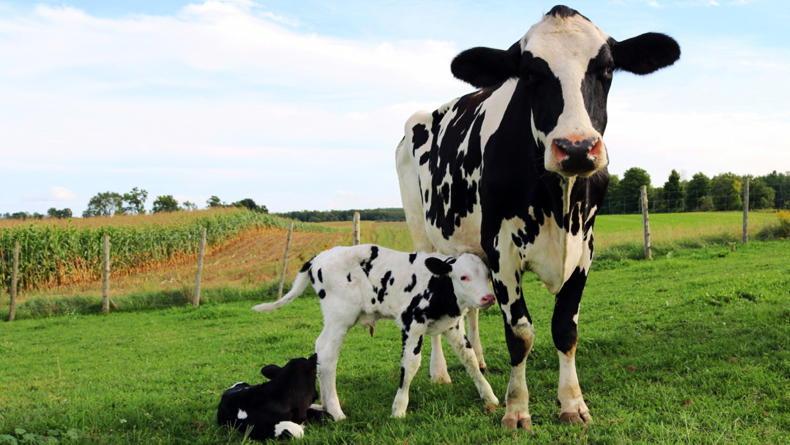
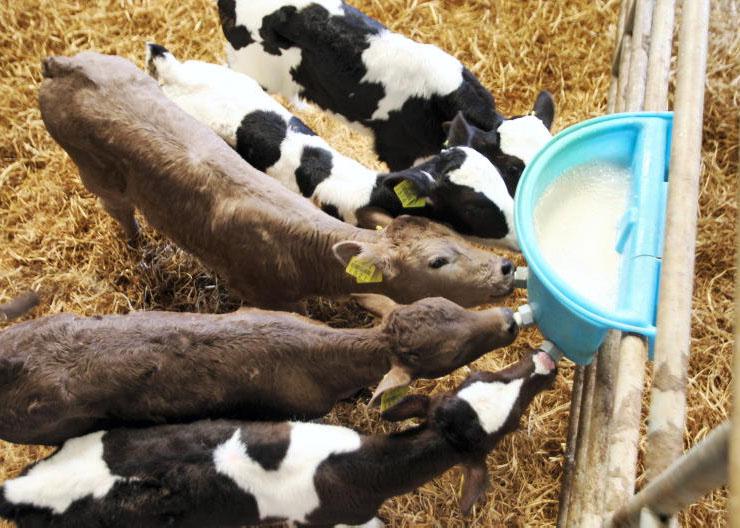
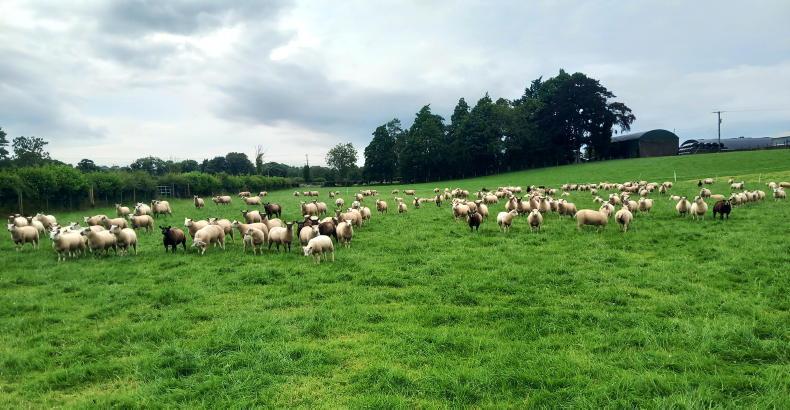
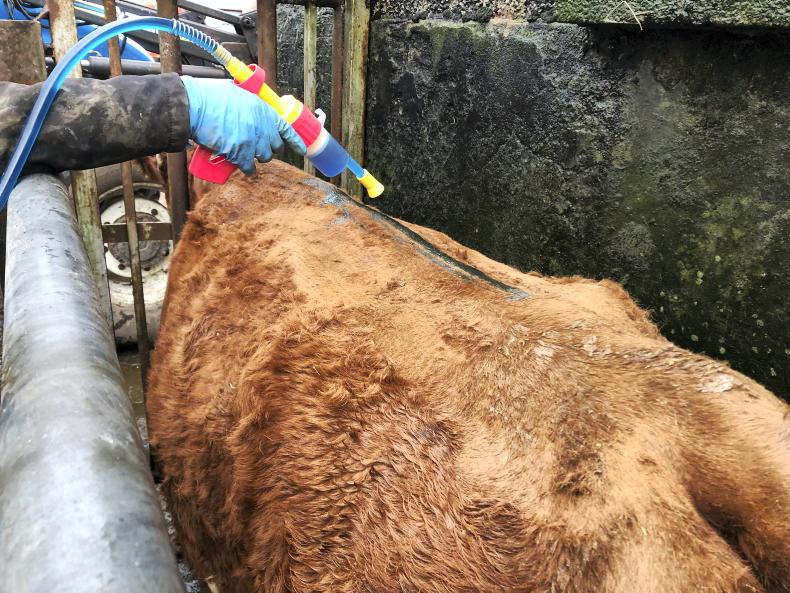
SHARING OPTIONS